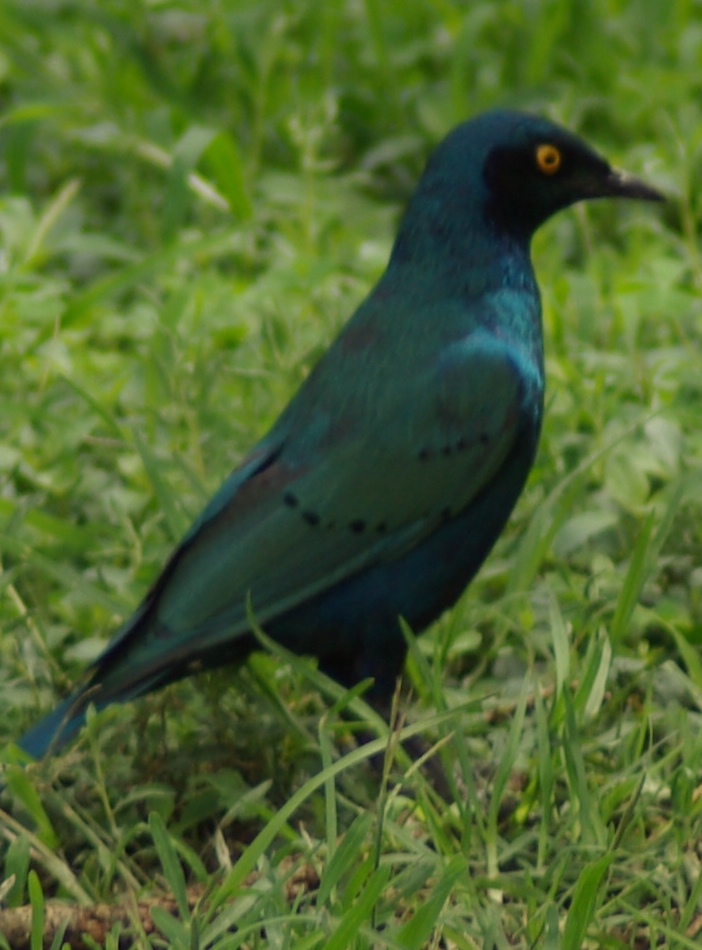| New Photos | Animal News | Animal Sounds | Animal Movies | Upload Photo | Copyright | Korean |
|---|
| Funny Animal Photos | Monsters in Animalia | Wiki Articles Fun Facts about Animals | Links | Home | Mobile A.P.A. |
|---|
| Image Info | Original File Name: Greater Blue-eared Glossy-starling (Lamprotornis chalybaeus) 1.jpg Resolution: 702x950 File Size: 585903 Bytes Date: 2007:06:24 03:53:43 Camera: PENTAX K10D (PENTAX Corporation ) Exposure: 1/180 sec Focal Length: 300/1 Upload Time: 2007:10:24 11:38:47 | |
| Author | Name (E-mail): Unknown | |
| Subject | Greater Blue-eared Glossy-starling (Lamprotornis chalybaeus) - Wiki | |
 |
| Email : E-Card | Poster | Web Master Delete Edit Info Admin |
| Description | Greater Blue-eared Glossy-starling (Lamprotornis chalybaeus) - Wiki
Greater Blue-eared Glossy-starling
The Greater Blue-eared Glossy Starling, or Greater Blue-eared Starling, Lamprotornis chalybaeus, breeds from Senegal east to to Ethiopia, and south through eastern Africa to northeastern South Africa and Angola It is a very common species of open woodland which undertakes some seasonal movements. Description The Greater Blue-eared Glossy Starling is a 22 cm long, short tailed bird. This starling is glossy blue-green with a purple-blue belly and blue ear patch. Its iris is bright yellow or orange. The sexes are similar, but the juvenile is duller and has blackish brown underparts. The populations from southern Kenya southwards are smaller than northern birds and are sometimes considered to be a separate subspecies, L. c. sycobius. The Lesser Blue-eared Glossy Starling is very similar to this species, but the blue of the belly does not extend forward of the legs in that bird. The Greater Blue-eared Glossy Starling has a range of musical or grating calls, but the most familiar is a nasal squee-ar. Behaviour Breeding The Greater Blue-eared Glossy Starling nests in holes in trees, either natural or excavated by woodpeckers or barbets. It will also nest inside the large stick nests of the Sacred Ibis or Abdim's Stork. The three to five eggs are greenish-blue with some brown or purple spots, and hatch in 13-14 days. The chicks leave the nest in another 23 days. This species is parasitised by the Great Spotted Cuckoo and occasionally the Greater Honeyguide Roosting The Greater Blue-eared Glossy Starling is highly gregarious and will form large flocks, often with other starlings. Its roosts, in reedbed, thorn bushes, or acacia, may also be shared. Feeding Like other starlings, the Greater Blue-eared Glossy Starling is an omnivore, taking a wide range of invertebrates seeds and berries, especially figs, but is diet is mainly insects taken from the ground. It will perch on livestock, feeding on insects disturbed by the animals and occasionally removing ectoparasites. http://en.wikipedia.org/wiki/Greater_Blue-eared_Glossy-starling
| |||
| Comments |
| ||||||||||||||||||||||
| Copyright Info | AnimmalPicturesArchive.com does not have the copyright for this image. This photograph or artwork is copyright by the photographer or the original artist. If you are to use this photograph, please contact the copyright owner or the poster. |
|
|
|
| |||||||
| CopyLeft © since 1995, Animal Pictures Archive. All rights may be reserved. | ||||||||
Stats